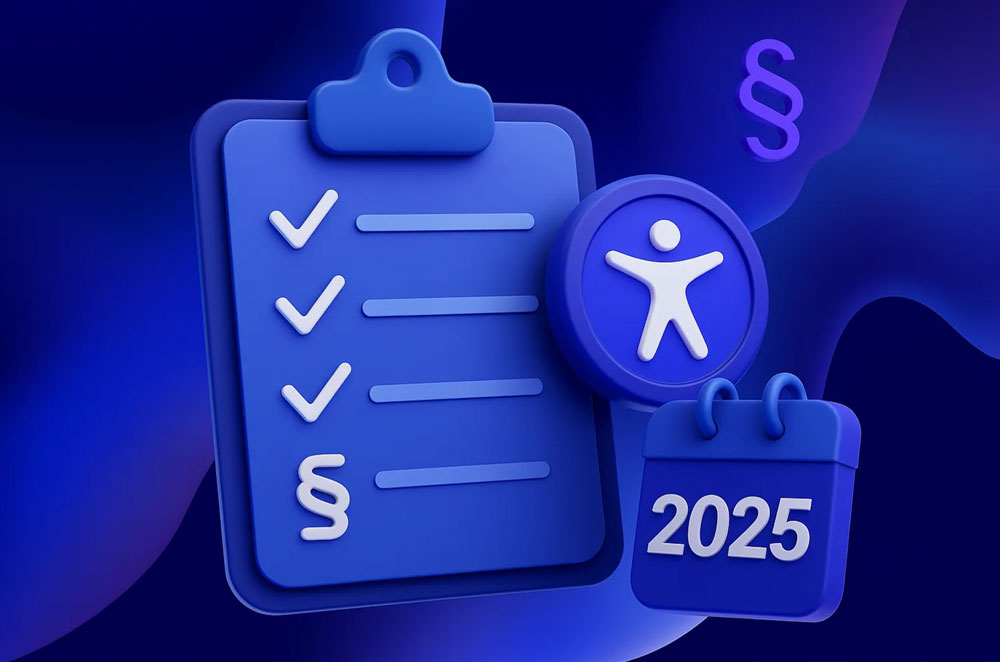Designing for Everyone: Accessibility Tips for UI/UX Designers

In today's digital world, creating accessible user interfaces is not just a nice-to-have feature but a necessity. With the European Accessibility Act coming into force in 2025, accessibility is becoming a legal requirement for many digital products. But beyond compliance, designing with accessibility in mind means creating better experiences for everyone, regardless of their abilities or circumstances.
Why Accessibility Matters in UI/UX Design
Accessible design benefits not only people with permanent disabilities but also those with temporary or situational limitations. Think about someone with a broken arm, a person in a noisy environment, or someone using a mobile device in bright sunlight – they all benefit from accessible design practices.
Moreover, accessible websites often rank better in search engines, reach a wider audience, and demonstrate social responsibility. According to the World Health Organization, approximately 15% of the world's population lives with some form of disability, representing a significant user base that should not be overlooked.
Essential Accessibility Tips for Designers
1. Color and Contrast
Ensure sufficient color contrast between text and background. The Web Content Accessibility Guidelines (WCAG) recommend a contrast ratio of at least 4.5:1 for normal text and 3:1 for large text.
Never rely solely on color to convey information. Always use additional indicators like patterns, icons, or text labels to ensure colorblind users can understand your interfaces.
2. Typography and Readability
Use legible fonts with adequate size. Aim for a minimum text size of 16px for body text.
Maintain proper line spacing (1.5 times the font size) and paragraph spacing (2 times the font size) to improve readability, especially for users with dyslexia or visual impairments.
3. Keyboard Navigation and Focus States
Ensure all interactive elements are keyboard accessible. Users should be able to navigate through your interface using only the keyboard.
Design clear focus states so users know which element is currently selected when navigating without a mouse.
4. Form Design
Use explicit labels for form fields instead of relying on placeholders, which disappear when users start typing.
Provide clear error messages and validation feedback that doesn't rely solely on color.
5. Alternative Text and Media
Include descriptive alternative text for images that convey information.
Provide captions and transcripts for audio and video content.
Tools and Testing for Accessibility
Several tools can help designers check for accessibility issues:
- Color contrast checkers like WebAIM's Contrast Checker
- Screen reader testing with VoiceOver (Mac/iOS) or NVDA (Windows)
- Keyboard navigation testing
- Automated accessibility evaluation tools like Axe or WAVE
Remember that automated tools can only catch about 30% of accessibility issues. Manual testing with actual assistive technologies is essential.
Integrating Accessibility into the Design Process
The most effective approach is to consider accessibility from the beginning of your design process:
- Include accessibility requirements in your design specifications
- Create accessible design components and patterns in your design system
- Test with users who have disabilities
- Educate your team about accessibility best practices
Conclusion
Designing for accessibility is not about limiting creativity but expanding it to serve all users better. By implementing these accessibility tips in your UI/UX design process, you're not only preparing for upcoming legal requirements but also creating more inclusive, usable, and effective digital products.
Remember that accessibility is not a one-time effort but an ongoing commitment to inclusive design. Start small if necessary, but start now – your users will thank you for it.
Ready to Make Your Website More Accessible?
Start using Usermate today and offer a better experience for every visitor — with powerful features, easy integration, effortless setup, and full customization at an unbeatable price.
